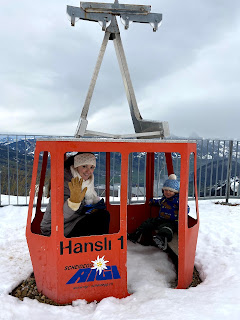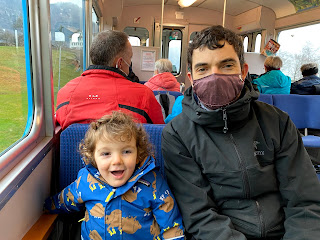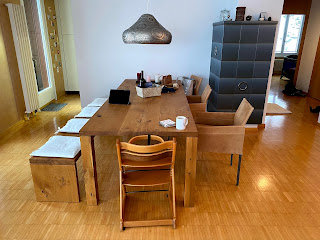Take to the panoramic slopes of Rigi on a weekday to have the famous mountain in Central Switzerland to yourself. The Panorama Path that culminates at Rigi-Scheidegg is the perfect sort of walk.
It's a Monday in December and I have fallen into bed good tired, fresh-air tired. A different sort of tired to the usual Monday-tired. Here's why: we've spent the day on Rigi, Queen of Mountains, in Central Switzerland, using a spare day of holiday to experience one of the country's most famous excursions at a quiet time.
Popular since the Victorian era, when Queen Victoria ascended the summit side-saddle on her pony, Rigi is still a popular excursion. It is renowned for its 360-degree panoramas and magical sunsets. We followed the 7km Panorama Path from Rigi Klösterli to Rigi Scheidegg with two aims: a gentle walk and great views.
The cogwheel railway, which just turned 150 (it was completed three years after Victoria's visit), whisked us up from Goldau on the shores of Lake Lucerne into folds of snow and pine trees decorated white. Emerging at Rigi Klösterli on the southern flank of the mountain, we immediately knew the path would offer what the panoramas it promised. Tumbling away from the train station, the mountain unfurled like the pleats of a skirt, swooping and swooshing in layers of woodland and meadow and rock to the lowlands.
As we set off, the path was beautifully prepared and gently ascending, following the route of a railway that was in situ from 1874 to 1931. It passed old railway bridges and through a tunnel, but the views it afforded were the highlight. From every stretch of the path, they expanded as far as the eye could see - over the lakes of Lucerne and Zug to the lowlands, and all the way to the marshmallow-white Bernese mountains. As we walked Rigi fanned out, now reminding me of a tossed duvet, the folds represented by different valleys and shoulders rising to the summit. The cloud was matte grey so the scene looked soft-focused.
Approaching Rigi-Scheidegg, we walked into snowflakes floating horizontally, and we sang "Walking in the air" while motioning aeroplane arms. Albie loved the child-sized gondola outside the cablecar station, where we played as an icy wind rushed through. He was even more excited by the prospect of the "flying bus" (Albie-ish for 'gondola') that would take us down to Kräbel, where we would rejoin the cogwheel railway bound for Goldau.
Every Monday should be spent in the mountains: all that fresh air and scenery will ensure a spring in my step the whole week long, and a good sleep tonight.
Plan your route here.






















